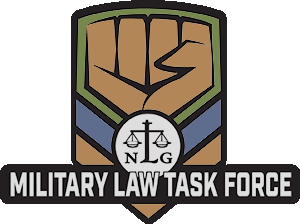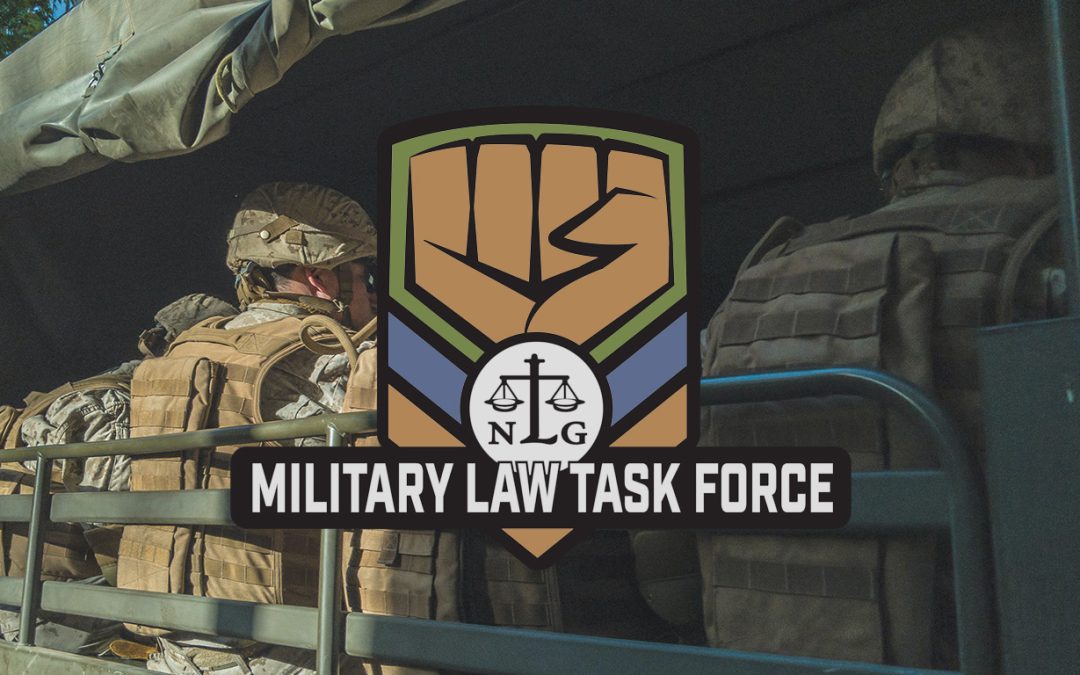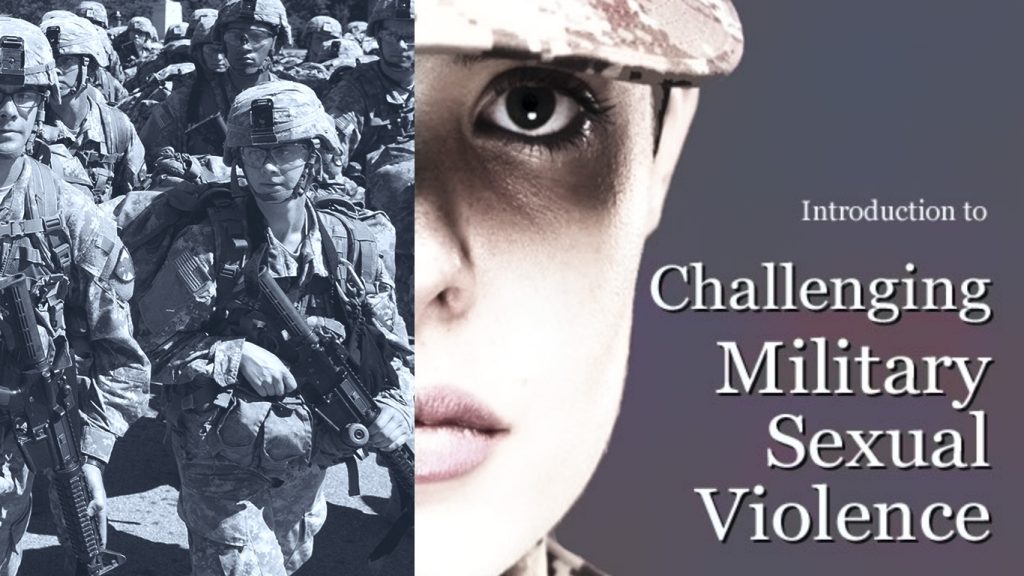BY AARON FRISHBERG
Editor’s Note: This is the second part of a two-part review of Military Equal Opportunity policies. The first part appeared in the Winter, 2018, issue of On Watch.
The Air Force EO provisions are contained in Air Force Instruction 36-2706. The regulation is marked on the front page with the imprimatur, “By Order of the Secretary of the Air Force”, and lest there be any doubt, the bold heading, “COMPLIANCE WITH THIS PUBLICATION IS MANDATORY.” The subject of the Instruction is “Equal Opportunity Program, Military and Civilian.”
With one distressing exception, this regulation is head and shoulders above the regulations of the other branches of the armed services in their successful aspiration to provide a watertight seal to equal opportunity to members of the Air Force and to civilian employees and contractors, so that any discrimination that occurs is a result of not following the regulation, not its porous ability to allow discrimination to take place in its interstices.
The distressing exception, found at 3.33.3, bears immediate attention: The regulation instructs EO officers:
The EO office must immediately refer all allegations of homosexual conduct or perceived or alleged discrimination based on sexual orientation to the alleged offender’s military commander for action. See AFI 36-3206, Administrative Discharge Procedures for Commissioned Officers, attachment 2 and AFI 36-3208, Administrative Separation of Airmen, attachment 4. Such issues are not within the authority of the Air Force EO program.
It is true that the date of the Instruction is October 5, 2010, and that a lot of water has flowed under that bridge in the intervening years. Nonetheless, the regulation remains in force, and any custom that has developed of taking a less tolerant approach to sexual orientation-based harassment and discrimination is subject to change at the behest of the Commander-in-Chief, a known homophobe.
With that glaring exception, as noted above, the Air Force regulation is an example of what the other branches of the armed services could have done if someone with the authority to fashion EO regulations had thought out carefully how they could be made effective.
AF136-2706 begins with a declaration of Air Force policy of zero tolerance for unlawful discrimination or harassment, including sexual harassment of any kind. 1.1.
That declaration is amplified by the statement that it is “against Air Force policy for any Airman, military or civilian, to unlawfully discriminate against, harass, intimidate or threaten another Airman on the basis of race, color, religion, sex, national origin, age, disability, reprisal, or genetic information.” 1.1.1.
The same subpart of the regulatory paragraph goes on to define unlawful harassment to include “unwelcome sexual advances, requests for sexual favors, or other verbal or physical conduct of a sexual nature particularly when submission to such conduct is made directly or indirectly as a term or condition of employment, and/or when submission to or rejection of such conduct is used as a basis for an employment decision affecting the person.” 1.1.1, id.. The same paragraph continues by defining “[u]nlawful harassment” to also include “creating an intimidating, hostile working environment for another person on the basis of race, color, religion, sex, national origin, age, disability, or genetic information,” and it goes on to state that the use of disparaging terms with respect to these identifying conditions “contributes to a hostile work environment and must not be tolerated.” 1.1.1, , id.
The following paragraph declares that while the operational language of the Air Force is English, commanders, supervisors and managers at all levels must not require use of English for personal communications which are unrelated to official duties. 1.1.2.
A RIGHT WITHOUT A REMEDY
The policy discussed above placing sexual orientation discrimination off-limits to EO officers is slightly mitigated by the paragraph on harassment based on sexual orientation, which states that while not within the purview of Title VII, (presumably referring to the employment Title of the Civil Rights Act of 1964), the Air Force’s goal of maintaining a harassment-free environment for its military members and civilian employees also includes harassment based on sexual orientation. 1.1.3. This is called recognizing a right without a remedy. In place of a remedy, the regulation notes that sexual orientation harassment by military personnel may be punishable under UCMJ, Article 92, and should be addressed through command channels. 1.1.3, id.
Early in the Instruction, the EO office makes its first appearance. 1..4.1. The EO office, and the EO officer, will be seen to play a central role in Air Force implementation of the Instruction.
Helpful in finding one’s way through the Instruction is the Table of Contents found at the beginning of the Instruction, on pages 3-10. Also helpful is the list of abbreviations and acronyms beginning at page 135. The Air Force believes in using acronyms for as many functions as possible, and its policy may be impenetrable except to telepaths without this list.
BUCK STOPS WITH BASE COMMANDER
The Installation commander is responsible for the military and civilian personnel under his or her command. This individual is responsible for the EO complaint and ADR (Alternative Dispute Resolutions) programs under his or her command. 1.19. This is where the buck stops. The installation commander is charged with the responsibility, inter alia, to appoint the EO director and ensure adequate staffing of the EO office, 1.19.1; to ensure prompt processing of EO complaints, 1.19.3; to encourage informal resolutions of EO complaints, id.; to ensure that Air Force employees and management provide full cooperation to EO officials, 1.19.4, to accept and dismiss complaints in total or in part as warranted, 1.19.5; to ensure that Air Force and EEOC decisions or orders are fully and promptly implemented, 1.19.7; to provide for an environment free from unlawful discrimination and sexual harassment, 1.19.9; to ensure subordinate commanders appoint an EO specialist to serve as subject matter expert on all inquiries, 1.19.15; and to decide first level appeals on formal military EO cases involving unlawful discrimination or sexual harassment, 1,19.16.
No other branch of the Armed Forces has regulations that so clearly delineate an ultimate responsibility on the base commander level for the implementation of anti-discrimination policies. Rather, the tendency in the other branches of the armed forces is to spread responsibility among several layers of the military hierarchy so that no one individual is held to ultimate responsibility at the base level, and there is every opportunity for EO complaints to fall through the cracks.
EO DIRECTOR’S RESPONSIBILITIES
The Director of Equal Opportunity is the officer who implements the EO program at the base level and reports to the base commander. 1.20. Again, there is a single individual charged with overall responsibility for carrying out EO laws and policy and who is accountable for any failure to do so.
1.20. The EO Director either doubles as or works with the Alternative Dispute Resolution manager to make available ADR concerning EO complaints. 1.20.12.
The EO Director also is responsible for notifying complainants of class complaints of the procedures for class complaints and mixed complaints. 1.20.22. No other branch of the armed services even acknowledges in its regulations the existence of class complaints, let alone making someone responsible for complainants being advised of the procedures to be followed in utilizing this closely guarded secret procedural remedy for class wide discrimination issues.
Civilian complaints are evaluated by the installation commander or his or her delegated representative, the vice-commander or EO director for determination or dismissal. 1.20.21. The EO director is not permitted to decide on dismissal or determination on any case in which she or he participated as a counselor. 1.20.21.
Reporting directly to the EO Director are EO specialists. 1.21. The duties of the EO specialist are laid out in a page and one-half list containing twenty-six paragraphs. No attempt will be made to summarize these duties, except to note that the EO specialist is to maintain a neutral position, 1.21.1, and to serve as subject matter experts, 1.21.17, and interfaces with all levels of installation personnel. The next, lowest level of position within the EO office is the EO counselor, who is to maintain a neutral position and whose duties primarily consist of advising complainants and potential complainants of their rights and options. 1.22.1, 1.22, passim.
UNIT COMMANDER’S RESPONSIBILITIES
The unit commander is charged with responsibility to provide an environment free from unlawful discrimination and sexual harassment. 1.23.1; to ensure that all allegations of unlawful discrimination and sexual harassment are thoroughly investigated, 1.23.2; to inform unit members of their right to file EO complaints, 1.23.3; and to inform unit members through briefings and supplemental EO policy guidance that the Air Force will not tolerate unlawful discrimination and sexual harassment. Commanders and supervisors will take appropriate disciplinary and corrective action when unlawful discrimination or sexual harassment occurs, 1.23.4, 1.23.5; to ensure that every effort is made when a formal complaint is filed with the EO office to protect the complainant’s identity, 1.23.6; to inform alleged offenders in that they are the subject of a formal EO complaint, to provide them with only the general nature of the EO-related allegations filed against them and to ensure that the alleged offender is cautioned against taking reprisals or other retaliatory actions 1.23.7; to inform the alleged offender when the case against him or her is closed and of the right to appeal the outcome in the case, 1.23.8; and to investigate allegations of unlawful discrimination or sexual harassment, when the military complainant has elected not to file an unlawful discrimination complaint with the EO office.1.23.9. The same duties fall upon a geographically separated unit commander. 1.24.
AIR FORCE EXCLUSIVE: JA ADVICE IN EO MATTERS
Although various federal statutes involving discrimination provide for the payment of compensatory damages and attorney fees by the United States including in cases brought against the United States, including the military, the Air Force is the only branch of the service to involve the Judge Advocate in advising on and settling such claims brought by civilians against the military. It is to be hoped that the involvement of Judge Advocate professional attorneys who have the confidence of the base commander has led and will lead to more realistic negotiations with the Air Force by civilian claimants with discrimination or sexual harassment claims.
The installation staff judge advocate provides legal advice on formal EO unlawful discrimination and sexual harassment complaints, 1.25; conducts a legal sufficiency review memorandum on all formal military EO complaints on whether a preponderance of the credible evidence supports a violation of the EO policy, 1.25.1; provides legal advice to the installation commander on informal civilian complaints and dispute resolution matters, 1.25.2; reviews initial interview outlines/questions drafted by the EO office and provides recommendations and feedback for formal EO cases, 1.25.3; reviews for legal compliance in the informal process, resolutions/settlement agreements, reviews claims for compensatory damages and attorney fees, 1.25.4; and advises the installation/center commander (director) on the amounts to be paid and negotiates fee agreements with opposing parties. Id.
ADDITIONAL AIR FORCE EXCLUSIVES
The Air Force is also the only branch of the service that addresses the coverage of National Guard members and Reservists who have been activated. 1.27, 1.29.
The Air Force also is unique among the Armed Services in addressing the availability of Freedom of Information Act/ Privacy Act provisions when records are requested of the EEO office. 1.39.
Unlike the Army and Navy, which encourage the complainant to seek resolution with the offending party, the Air Force encourages one-on-one addressing of the issue by commanders, first sergeants and supervisors only when the complainant has not filed a military complaint with the EO office.
3.2.1.
The Air Force is alone among the service branches to address incidents of discriminatory acts of personal affront or injury based on bigotry, what in the civilian world would be called hate crimes.
The Air Force provides for the investigation of an EO military formal complaint even when the assistance of the EO office on another installation is required. For example, an EO investigator will conduct of interviews of subjects on another air base, to be returned to the EO office at the installation where the complaint was received. 1.47.1.
Additionally, Civilian informal Equal Employment Opportunity complaints that require assistance from the EO office in processing a complaint are likewise dealt with by a paragraph of the Instruction. 1.47.2. Such provisions are not so remarkable for what they include as they are for the fact that these relatively rare occurrences are addressed by regulation, suggesting that someone in authority has made serious efforts to provide a seamless Instruction which will address a multitude of “What if…” questions.
The Instruction provides, in a three-page, 25-paragraph chapter on the use of Alternative Dispute Resolution, modalities to swiftly address and resolve EO issues when the complainant is willing to engage in mediation or similar modalities. 2.1, 2.2. Chapter 3 of the Instruction consists of a 23-page series of numbered paragraphs on Military Equal Opportunity (MEO) Assistance and Complaint Processing, followed by a three-page chart which summarizes the directives on this subject. The chapter commences with methods of conducting informal assistance.
If the command has already worked issues falling under the purview of the EO office, the EO office will accept the complaint for processing only with the concurrence of the installation commander. 3.2.2. The EO specialist provides subject matter expertise on commander-initiated investigations when they fall within the purview of the EO office. 3.3. Processing of Informal military complaints within the scope of the EO office has the objective of attempting resolution at the lowest possible level. 3.4., 3.5.
Only members of the military, their families, and retirees may file military informal EO complaints.
3.6. Moreover, EO specialists will not accept military informal complaints if their concern is related to their off-base or DoD civilian employment. 3.7. There is no time limit for the filing informal complaints. 3.8. However, if an informal complaint is being filed more than 60 days after the alleged offense, the Installation Commander would need to waive the 60-day limit for good cause. 3.8.1.
LIMITS ON CONFIDENTIALITY
Complainants will be advised that the EO office does not have the privilege of confidentiality with respect to allegations of unlawful discrimination and will be directed to report to the Inspector General any form of reprisal. 3.9.2., 3.9.4. The same limitations as are enumerated above for the who and what of informal complaints apply to formal complaints, except that a formal complaint ordinarily must be filed within 60 days of the conduct complained of. 3.14, 3.15, 3.16, 3.17.
If the EO office investigation of allegations in a formal complaint finds that a preponderance of the credible evidence indicates that an EO violation has occurred, the complaint and findings will be forwarded to the judge advocate for review of its legal sufficiency, and if found sufficient, the complaint clarification report will be forwarded to the offender’s commander for review/action and to the complainant’s commander for review. The report must contain sufficient information to enable the commander to take action to eliminate unlawful discrimination or sexual harassment.
3.20.9. The commander must provide the EO office with a summary of any action taken. Id.
In all cases, the EO office of the complainant must follow up to ensure reprisal has not occurred. In substantiated cases, the EO office will conduct follow-up to ensure the offender has stopped the acts of unlawful discrimination or sexual harassment. 3.20.14.
Air Force members (but not their families or retirees) may appeal an EO finding with which they disagree to the next administrative review level, which for installation based conduct is the installation commander. 3.38.1. Appeals from an unsatisfactory appeal decision can be made to the next highest level. 3.38.1.9.
Claims of reprisal should be filed with the installation Inspector General. 3.40.
A list of military EO complaint processing responsibilities is summarized in a three-page table. Table 3.1.
CIVILIAN COMPLAINTS USUALLY GO TO EEOC
Chapter 4, spanning 16 pages, is exclusively dedicated to the processing of civilian EO complaints. Of interest to the civil rights bar, this chapter is beyond the scope of an article delineating the manner in which each branch of the armed services addresses EO complaints filed by members of that branch of the service.
For present purposes, it should be sufficient to state that the vast majority of EO claims involving civilians will be equal employment opportunity complaints. These complaints are processed internally by the Air Force, as are complaints based on employment discrimination or sexual harassment in other branches of the service.
Like civilian complaints of discrimination in employment, these will require administrative exhaustion before the EEOC. The salient difference between complaints against federal employers, including the armed services, and EEOC proceedings which are processed administratively against non-federal employers, is that the EEOC has no power in non-federal employment cases to take any steps beyond mediating between the parties, and issuing a “right to sue” letter if that mediation is unsuccessful. For federal government employees, including those employed by the Air Force or another branch of the armed services, the EEOC holds a fact-finding hearing and has the power to find in favor of the complainant and order a remedy against the government. Should a finding of discrimination not issue, the civilian employee is still entitled to commence an employment discrimination suit in federal court.
EO OFFICE “CLARIFIES” EOTIS
A short chapter of the Instruction, Chapter 5, running to three pages, addresses Equal Opportunity and Treatment Incidents (“EOTIs”). These incidents are defined as overt adverse acts occurring on or off base motivated by or having an overtone based on race, color, national origin, religion, or sex that involve a member of the Air Force, a family member, or a retiree. 5.1.
EOTIs are classified as minor, serious, or major incident, based on the number of individuals involved, the extent of physical injuries or property loss, or in the instance of major incidents, the activities of groups supporting supremacist causes, advocating the use or threat of violence, and the like. 5.2. The EO office is responsible for “clarifying” EOTIs, the Air Force’s term for investigating them, and reporting its findings to the appropriate Air Force higher headquarters for monitoring of and involvement in corrective action. 5.4, 5.5, 5.6.
DISABILITY DISCRIMINATION
The next chapter of the Instruction, Chapter 6, is devoted to the obligation to reasonably accommodate a disability, and the limits of that obligation. It cites to the Rehabilitation Act, as amended by the Americans with Disabilities Act and the amendments to that act as the source of the disability accommodation. 6.1.
This chapter, only three pages long, presents in synopsized form the law of disability discrimination, reasonable accommodation, the interactive process between the Air Force and the disabled individual, the limitation on reasonable accommodation based on undue hardship, and the rights and limits of requesting medical documentation. Chapter 6, passim. Whoever wrote the Air Force’s guide to disability discrimination has a better grasp of the legal principles involved than do some federal court judges.
No other branch of the armed services includes anything in its regulations to illuminate the “Thou shalt not” of disability discrimination, which because of the obligation of reasonable accommodation is more complex than simply forbidding less favorable treatment to persons with disabilities compared to the treatment afforded others.
The Air Force includes a chapter on equal opportunity operations in the deployed environment. This chiefly consists of ensuring that there are adequately trained EO specialists, and an adequately trained EO director. Chapter 7, passim.
The Air Force devotes chapter 8 to settlement agreements. Civilians who file complaints against the Air Force, unlike Air Force members, are able to seek redress in the form of money damages for discriminatory conduct. This chapter sets out guidelines for settling discrimination claims, and the level of the settlor for the Air Force, and compliance by the Air Force. It should be required reading for attorneys representing civilian employees in EO suits against the Air Force.
The Air Force includes in the Instruction a chapter on the congressional act, “The No FEAR Act”, which protects the complainants in anti-discrimination complaints and whistleblower actions. Chapter 11, passim. No other branch of the armed services so much as mentions this reinforcement to antireprisal provisions of EO law.
Aaron David Frishberg is a lawyer in private practice in New York. He has been a member of the Military Law Task Force for at least three decades and has served on its steering committee for many years. He continues to learn on the job how different military justice is from justice. He has never served in any of the armed services, and vows that he never will.



